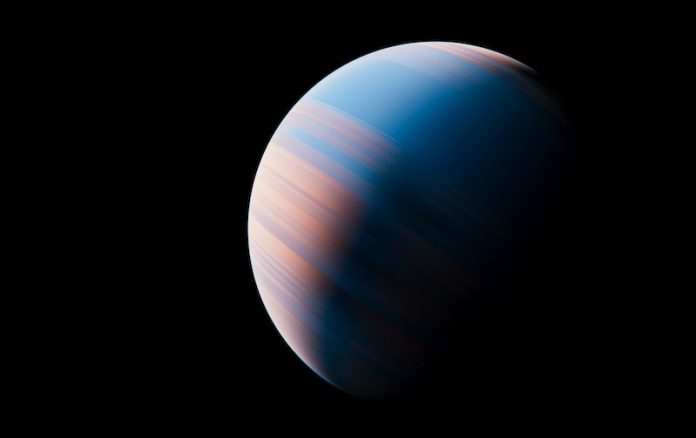
An international team of scientists has confirmed the discovery of a super-Earth—a planet larger than Earth but smaller than gas giants—orbiting within the habitable zone of a sun-like star. This planet, named HD 20794 d, is located just 20 light-years away, making it one of the closest Earth-like exoplanets ever found.
This exciting discovery, originally detected by Dr. Michael Cretignier from Oxford University in 2022, is based on over two decades of data and could help scientists understand more about planets that might support life. The research is published in Astronomy & Astrophysics.
A Planet That Could Have Liquid Water
HD 20794 d is about six times the mass of Earth and orbits its star at a distance where liquid water could exist—a key ingredient for life. The habitable zone is the region around a star where conditions might be just right for water to stay in liquid form rather than freezing or evaporating.
However, one unusual feature of this planet is its elliptical orbit—instead of moving in a perfect circle, it follows an elongated path, which means it moves between the outer and inner edges of the habitable zone. This variation in distance could affect its climate, making it more difficult to determine whether it has stable conditions for life.
How Scientists Confirmed the Planet
Dr. Cretignier first spotted a possible signal of the planet in 2022 while analyzing data from HARPS, a powerful instrument in Chile that detects planets by measuring tiny changes in the light from stars. These changes happen when a planet’s gravity slightly tugs on its star, shifting the light in a predictable way.
However, the signal was faint, and it was unclear whether it was caused by a planet, the star itself, or an instrument error. To confirm the discovery, scientists analyzed 20 years’ worth of data from both HARPS and a newer instrument called ESPRESSO. After years of detailed analysis, they confirmed that the signal was indeed from a planet.
Dr. Cretignier expressed his excitement:
“It was a huge joy when we could finally confirm the planet’s existence. Since the original signal was right at the edge of what our instruments could detect, we weren’t sure at first if it was real. Now, we know for sure.”
What’s Next?
Although scientists don’t yet know if HD 20794 d has life-friendly conditions, its location relatively close to Earth makes it a prime target for future space missions. Upcoming telescopes, such as the Extremely Large Telescope, Habitable Worlds Observatory, and the LIFE project, will study planets like this one in more detail.
These advanced instruments will search for biosignatures—chemical signs of life—by analyzing the planet’s atmosphere. If they detect gases like oxygen or methane in the right combinations, it could hint at biological activity.
“With its location in the habitable zone and its proximity to Earth, this planet could be crucial for future missions searching for life beyond our solar system,” said Dr. Cretignier. “While my main job is discovering new worlds, I’m excited to see what other scientists can learn about this one, especially because it’s one of the closest Earth-like planets we know of.”
The discovery of HD 20794 d brings us one step closer to answering one of humanity’s biggest questions: Are we alone in the universe?
The research findings can be found in Astronomy & Astrophysics.
Copyright © 2025 Knowridge Science Report. All rights reserved.



